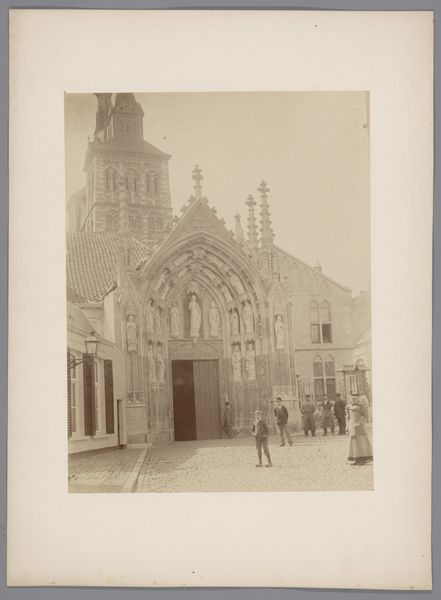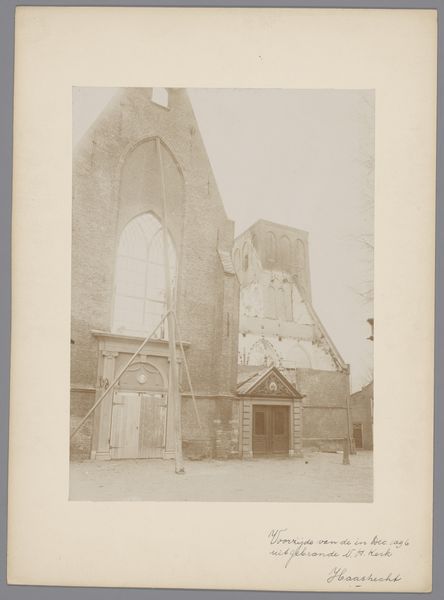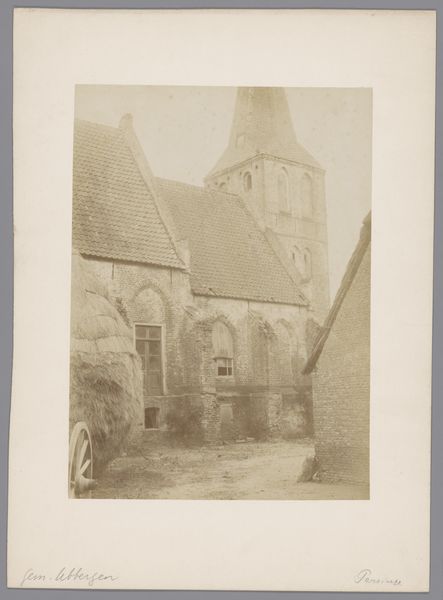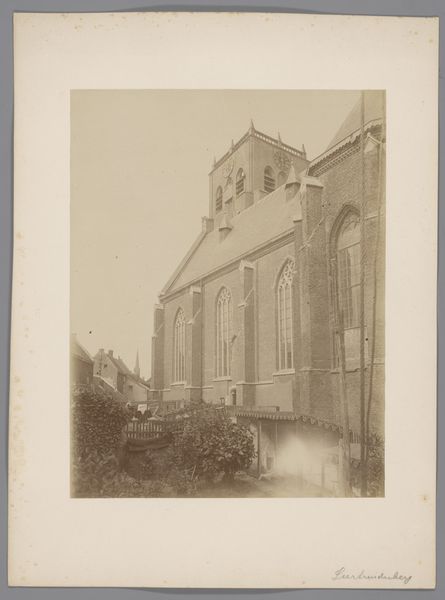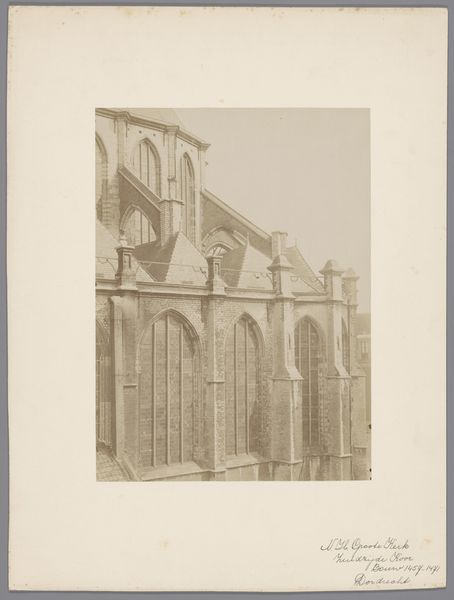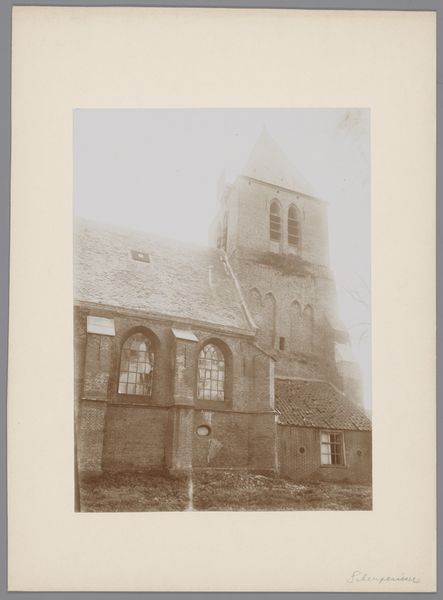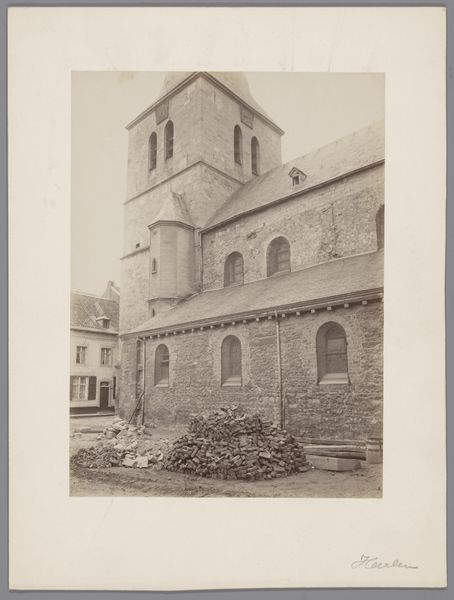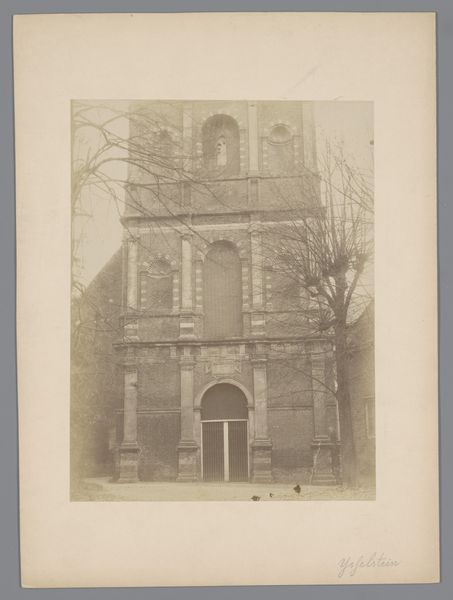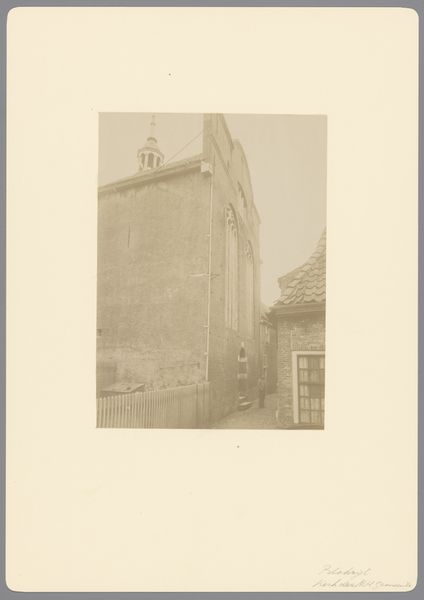
Dimensions: height 214 mm, width 152 mm
Copyright: Rijks Museum: Open Domain
Editor: So, this photograph, "Gezicht op de Hervormde Kerk te Vlissingen na de brand in 1911," which translates to "View of the Reformed Church in Vlissingen after the fire in 1911," was taken anonymously in 1911. The sepia tones and the obvious damage create such a powerful atmosphere of loss. How do you interpret this work, considering its historical context? Curator: That's a great starting point. Beyond the immediate tragedy, I see a potent commentary on power and vulnerability. Religious institutions have historically represented authority, but here, we witness its fragility in the face of unexpected disaster. How does the photographic medium itself—its ability to document reality—shape your understanding? Editor: I think photography adds an element of unvarnished truth, making the destruction feel even more real, more immediate. Like we’re seeing the community’s pain directly. Curator: Exactly. Consider how this image might resonate differently depending on one’s social standing or religious affiliation at the time. Was the Reformed Church a symbol of oppression or solace for different groups within Vlissingen? Whose voices are present and whose are absent in this visual record? The lack of people visible really reinforces a feeling of desolation. Editor: That’s a really interesting way to think about it – seeing the absence as a statement in itself. I hadn't considered the different perspectives of the townspeople, just my own reaction to the devastation. Curator: These photographs can be tools for critical inquiry, not just historical records. How might contemporary artists engage with archives like this to explore themes of resilience, community, or even the abuse of power in the wake of crises? Editor: This has made me think about how a single image can hold so many different narratives and provoke complex questions. I'll definitely approach historical photographs differently from now on! Curator: Wonderful. It’s about understanding the past to better critique the present, using art as a catalyst for dialogue and social awareness.
Comments
No comments
Be the first to comment and join the conversation on the ultimate creative platform.
